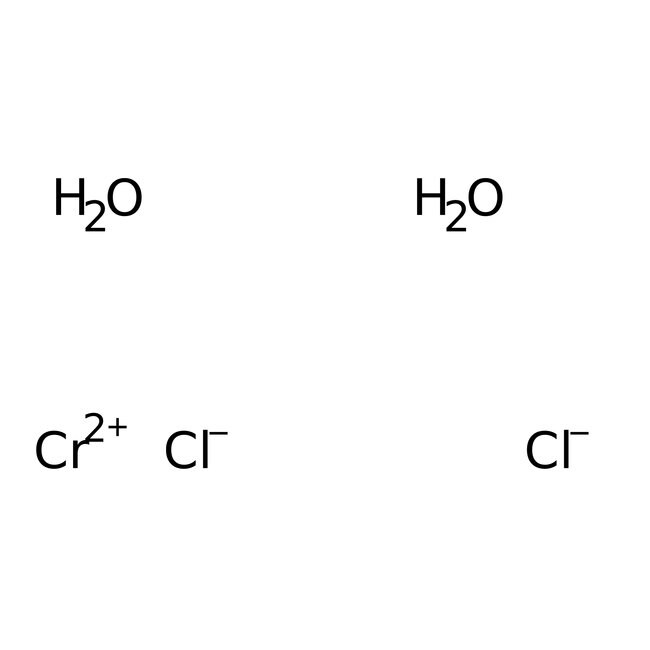Search Thermo Fisher Scientific
Chromyl chloride, 99.99% (metals basis), Thermo Scientific Chemicals



Chromyl chloride, 99.99% (metals basis), Thermo Scientific Chemicals
Chemical Identifiers
Specifications
Description
Highly spin-polarized chromium dioxide (CrO2) thin films were deposited on 100 TiO2 substrates by chemical vapor deposition using chromyl chloride as a precursor. Chromyl chloride (Cr02C12) reacts with cyclohexane solvent at 75 OC to give a dark precipitate along with chlorocyclohexane and a small amount of cyclohexene (in 10.0 and ca. 0.3% yields based on chromium). Chromyl chloride, CrO2C12, oxidizes cyclooctane, isobutane, and toluene under mild conditions (25-60 C). The reactions give chlorinated products (chlorocyclooctane, tert- butyl chloride, and benzyl chloride) and a dark chromium-containing precipitate. Used for Organic oxidations and chlorination, chromium coordination complexes, catalyst for polymerization of olefins. Chromyl chloride in carbon tetrachloride solution reacts in the cold with cyclohexene, cyclopentene, and 1-hexene to give the various isomeric chlorohydrins as the major products.
This Thermo Scientific Chemicals brand product was originally part of the Alfa Aesar product portfolio. Some documentation and label information may refer to the legacy brand. The original Alfa Aesar product / item code or SKU reference has not changed as a part of the brand transition to Thermo Scientific Chemicals.
- Organic oxidations and chlorination, chromium coordination complexes, catalyst for polymerization of olefins
Figures
Documents & Downloads
Certificates
Frequently asked questions (FAQs)
Citations & References
Safety and Handling
Classification of the substance or mixture
CLP classification - Regulation(EC) No 1272/2008
Label Elements
Signal Word
Danger
Hazard Statements
H314 - Causes severe skin burns and eye damage
H317 - May cause an allergic skin reaction
H340 - May cause genetic defects
H350 - May cause cancer
H350i - May cause cancer by inhalation
H410 - Very toxic to aquatic life with long lasting effects
Physical Hazards
H271 - May cause fire or explosion; strong oxidizer
Precautionary Statements
P273 - Avoid release to the environment
P210 - Keep away from heat, hot surfaces, sparks, open flames and other ignition sources. No smoking
P221 - Take any precaution to avoid mixing with combustibles
P280 - Wear eye protection/ face protection
P301 + P330 + P331 - IF SWALLOWED: rinse mouth. Do NOT induce vomiting
P305 + P351 + P338 - IF IN EYES: Rinse cautiously with water for several minutes. Remove contact lenses, if present and easy to do. Continue rinsing
P308 + P313 - IF exposed or concerned: Get medical advice/attention
Additional EU labelling
Restricted to professional users